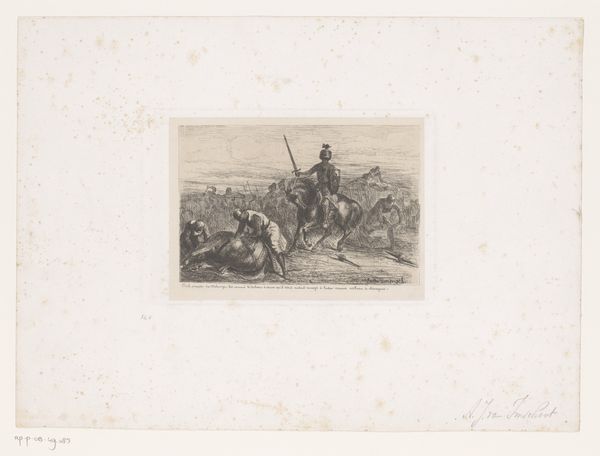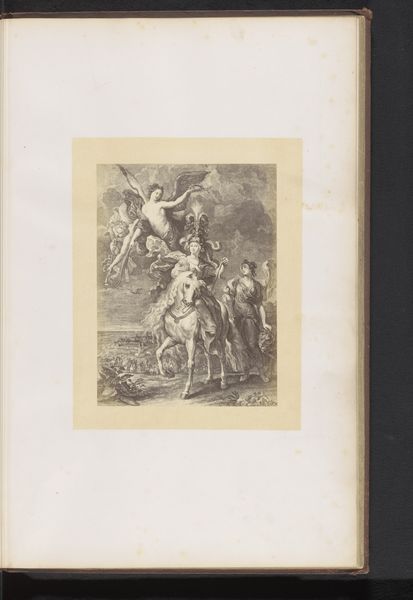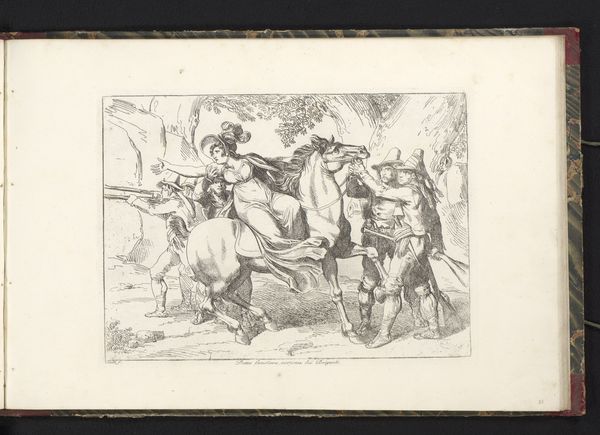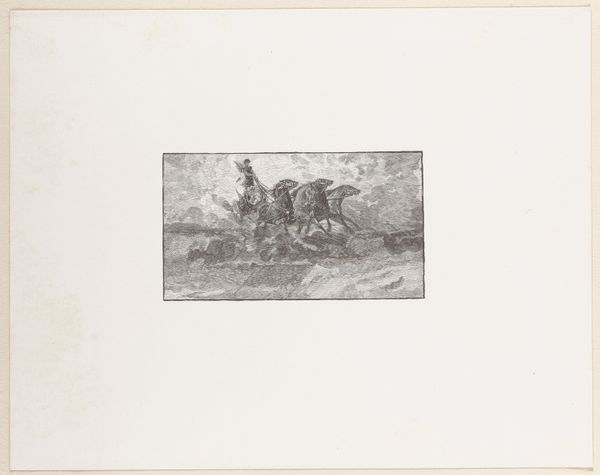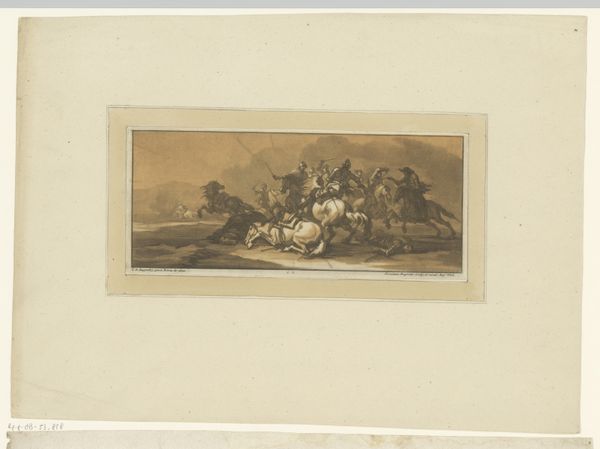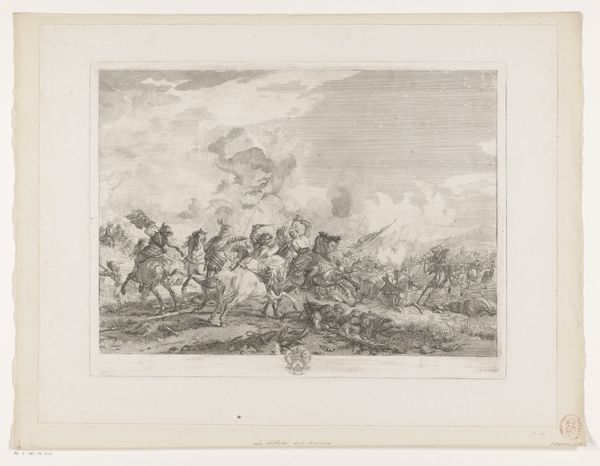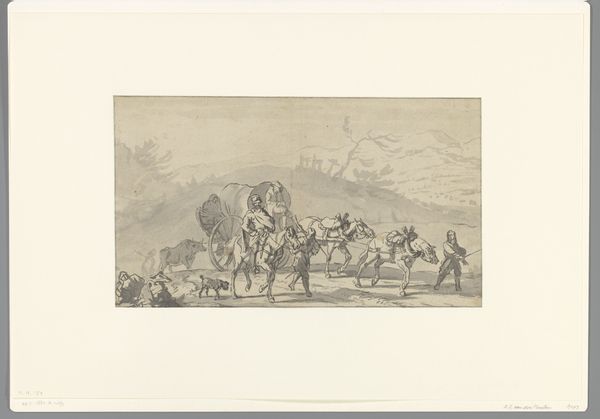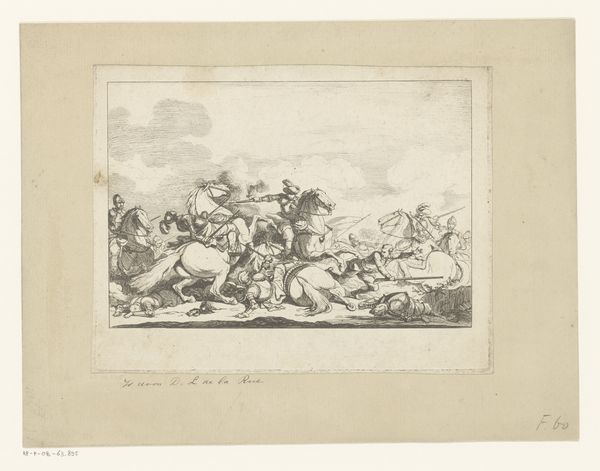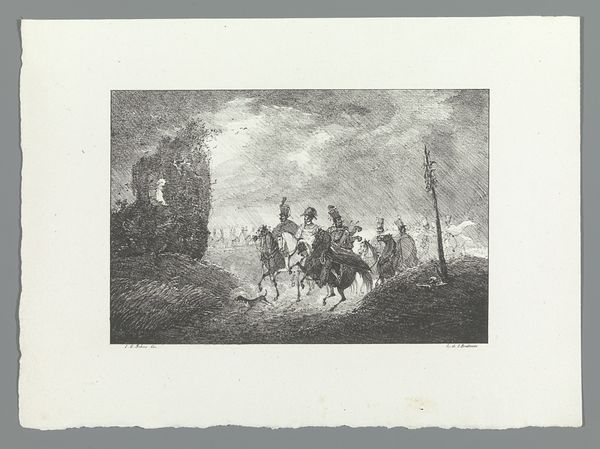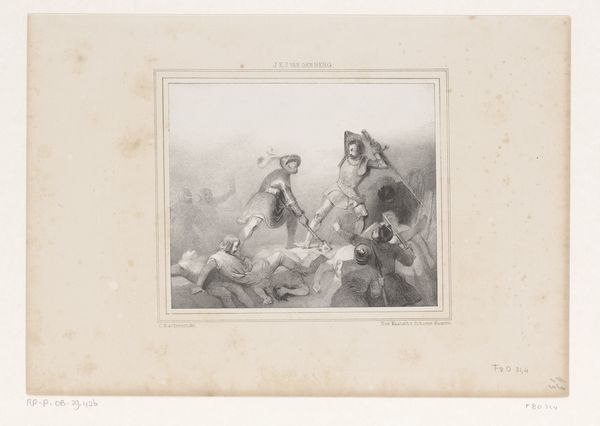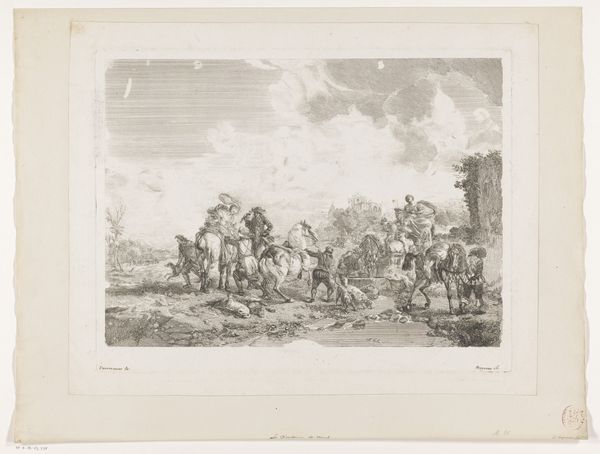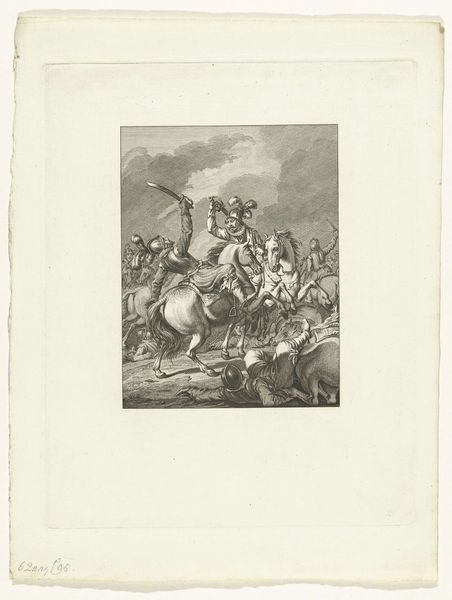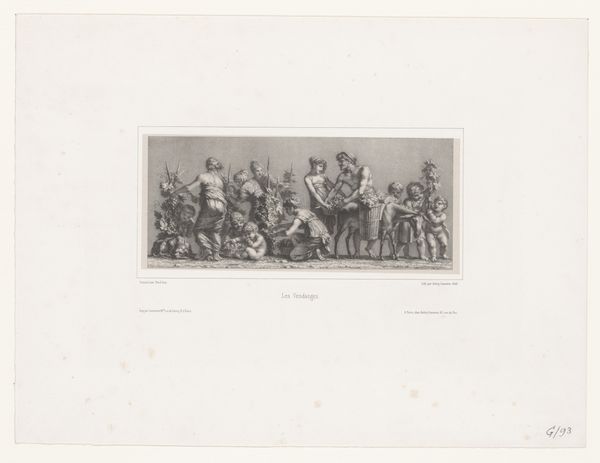
print, engraving
# print
#
landscape
#
figuration
#
romanticism
#
history-painting
#
engraving
Dimensions: height 300 mm, width 440 mm
Copyright: Rijks Museum: Open Domain
Curator: This engraving by Nicolas Henri Jacob, dating from 1818, is titled "Hippolyte aangevallen door een leeuw"—Hippolyte Attacked by a Lion. The scene bristles with a very classical sensibility, even as its dynamism feels so immediate. Editor: Immediately, my eyes dart to the sheer violence of it all! The tight hatching and stark contrast imbue the struggle with tremendous force, nearly making the figures burst from the two-dimensional picture plane. Curator: Absolutely! It’s worth noting how Hippolyte herself stands in for concepts of classical virtue being besieged by primal forces. Her figure, with the attributes of Minerva—a helmet, a spear—is a deliberate echo of Athena's triumphs. What do you make of the placement of Cupid or Eros alongside the drama? Editor: Ah, Eros. I read his presence, along with the lion’s wildness, as raw emotion—carnal appetite almost—intruding on a more restrained, intellectual order. Look how the serpent writhes in the lower-right too! Its scales echo that sense of tactile frenzy. The romantic notion of the sublime is front and center, it's where a human, mortal concept meets primal instincts. Curator: Quite, the juxtaposition of the cultivated goddess, of reason itself, against such unbridled animality, echoes those timeless tensions between our higher selves and our baser natures. Jacob subtly suggests these opposing forces do not just stand against, but even give form to, one another. Hippolyte wouldn't be defined without such encounters. Editor: You know, analyzing how Jacob manages tone within these lines makes one really appreciate the engraving medium itself— how it delivers intense chiaroscuro without relying on any chromatic range. Its texture conveys nearly everything—struggle, flight, fear. The artist is in command of its effects; that much is unmistakable. Curator: An engagement of intellect with form can reveal greater ideas. The myth’s symbolism, along with its inherent theatricality, is well amplified through a medium that calls for clarity but can offer nuanced depths. It certainly underscores the Romantic era’s investment in narrative. Editor: For all of its graphic, forceful presence, Jacob has also delivered a quietly profound meditation on conflicting aspects of the human psyche. Curator: Well said! The layers embedded are what stays, not just the bold lines, don't you agree?
Comments
No comments
Be the first to comment and join the conversation on the ultimate creative platform.
